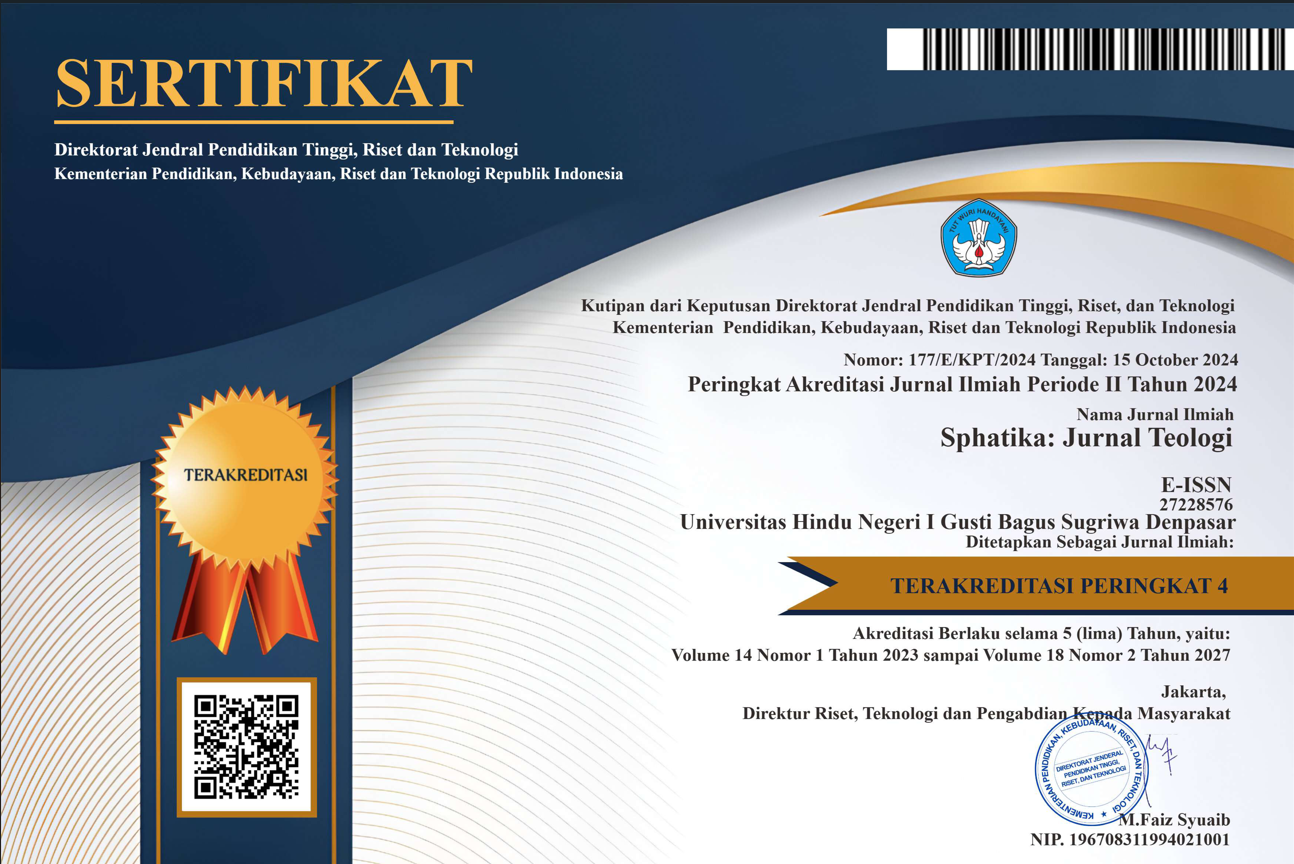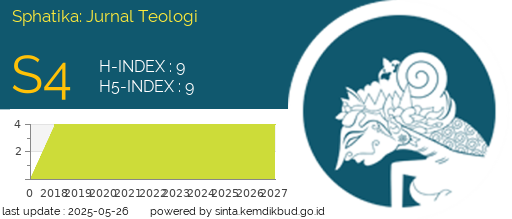Prosesi Tari Nata Mudra Karana dalam Upacara Melasti di Pantai Balekambang Kabupaten Malang (Perspektif Teologi Hindu)
DOI:
https://doi.org/10.25078/sphatika.v13i2.2213Keywords:
dance; Hindu Theology; motion; Nata Mudra Karana; sacred.Abstract
Nata Mudra Karana dance is a sacred art in Malang RegencyThis happens because this dance has adopted many sacred pandita mudra movements and is believed to have holy spirit energy. Therefore, this research becomes very important in order to reveal the Nata Mudra Karana Dance Procession in the Melasti Di Ceremony Balekambang Beach, Malang Regency and its influence on Hindus in Malang Regency. This research reveals the form of function and meaning contained in the Nata Mudra Karana Dance.
The theory used in this research is Religious Theory to examine the formulation of the first problem. Functional Structural Theory ( Talcott Parsons ) to examine the formulation of the second problem. Symbol Theory and Aesthetic Theory to examine the formulation of the third problem. This type of research is qualitative with Hindu theological approach.
The result of this research is the procession of Nata Mudra Karana Dance starting from the form of staging, preparation of infrastructure, place and time of implementation and procession of Nata Mudra Karana Dance. The Nata Mudra Karana dance has the following functions : (1) Religious function (2) Social function (3) Cultural preservation function (4) Entertainment function. The meanings contained in the Nata Mudra Karana Dance procession are (1) Theological meaning of the color element of the Nata Mudra Karana Dance (2) Theological meaning of the elements of the Nata Mudra Karana Dance movement form and (3) Socio-cultural meaning of Nata Mudra Karana Dance.
References
Atmadja, Suprian.A . 2007. Statistika : Bandung.
Dibia I Wayan. 2012. Taksu dalam Seni dan Kehidupan Bali. Denpasar: Bali Mangsi.
Donder, I Ketut. 2006. Brahmavidya Teologi Kasih Semesta. Surabaya: Paramita.
Frazer, J.G. 2001. Animisme Agama. Dalam DanielL. Pals. Seven The Theories Of Religiou.r;_ Alih Bahasa Ali Noer Zaman. Yogyakarta: Qalam
Ismet, Ruchimat. 1996. Seni Karawitan. Bandung: CV Geger Sunten
Murgiyanto, 1983. Koreografi. Bandung: PT. Rosda karya.
Nurwani. 2007. Pengetahuan Tari. Diktat Jurusan Sendratasik. FBS Universitas Negeri Medan.
Soedarsono, 2001. Pengantar Pengetahuan Tari. Jakarta. Lagaligo.
Swastika, I Ketut Pasek. 2011. Arti dan Makna Sarana Upakara dan Filosofis Perkembangan Penjor. Bali : Gandapura.
Wiana, I Ketut. (2001). Yajna dan Bhakti Dari Sudut Pandang Hindu. Denpasar: Manik Geni.
















